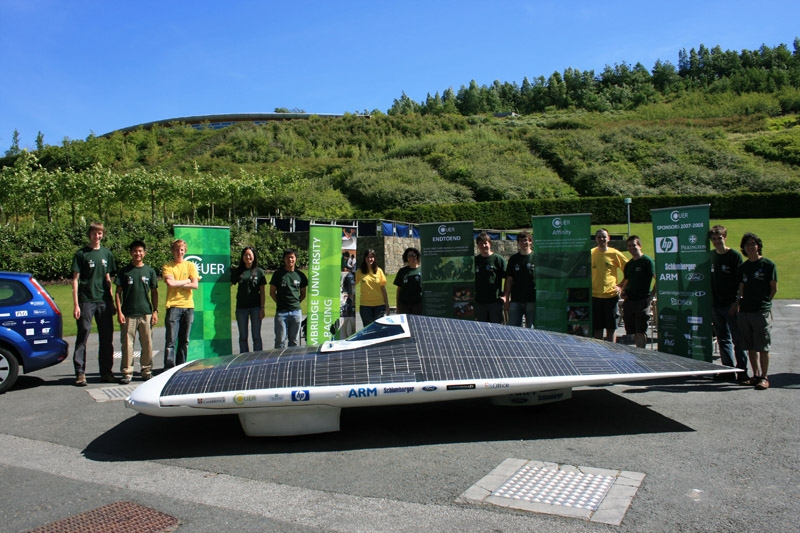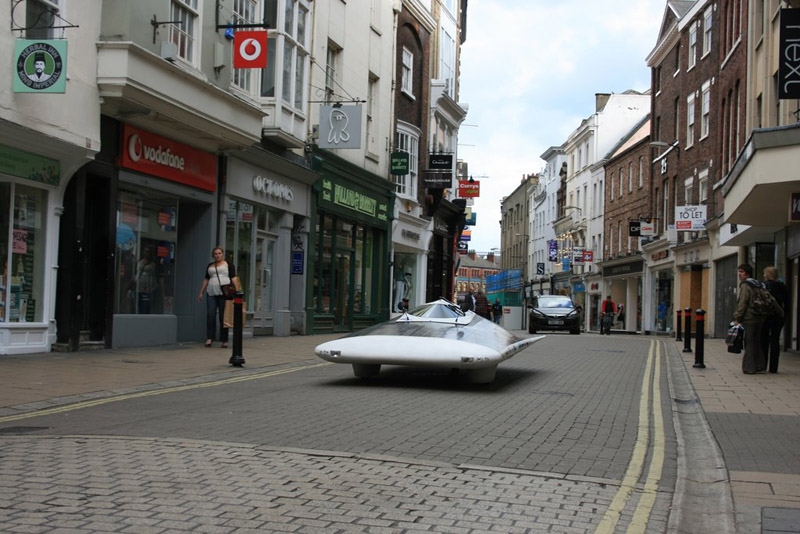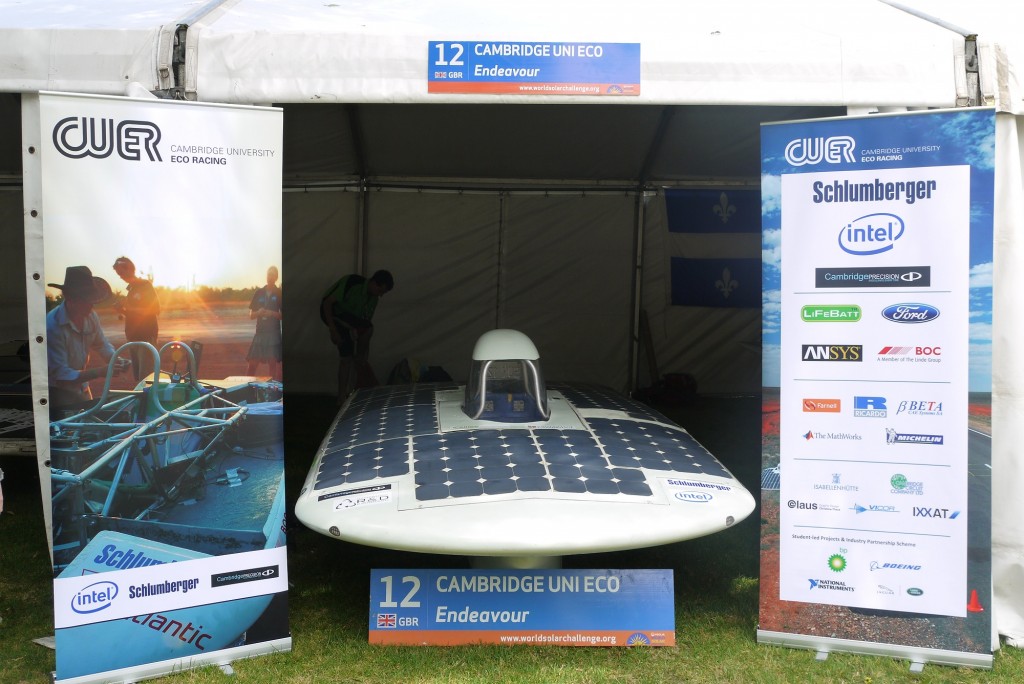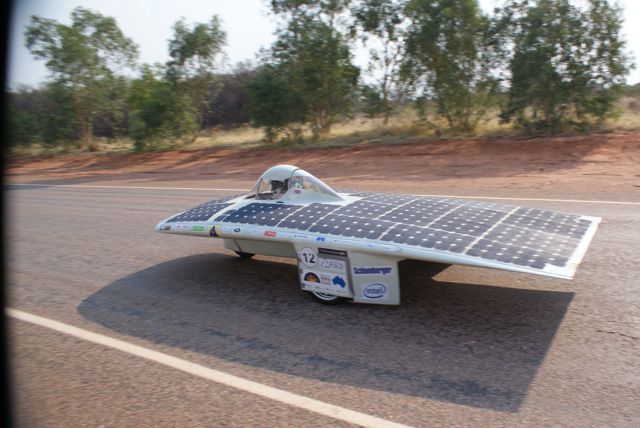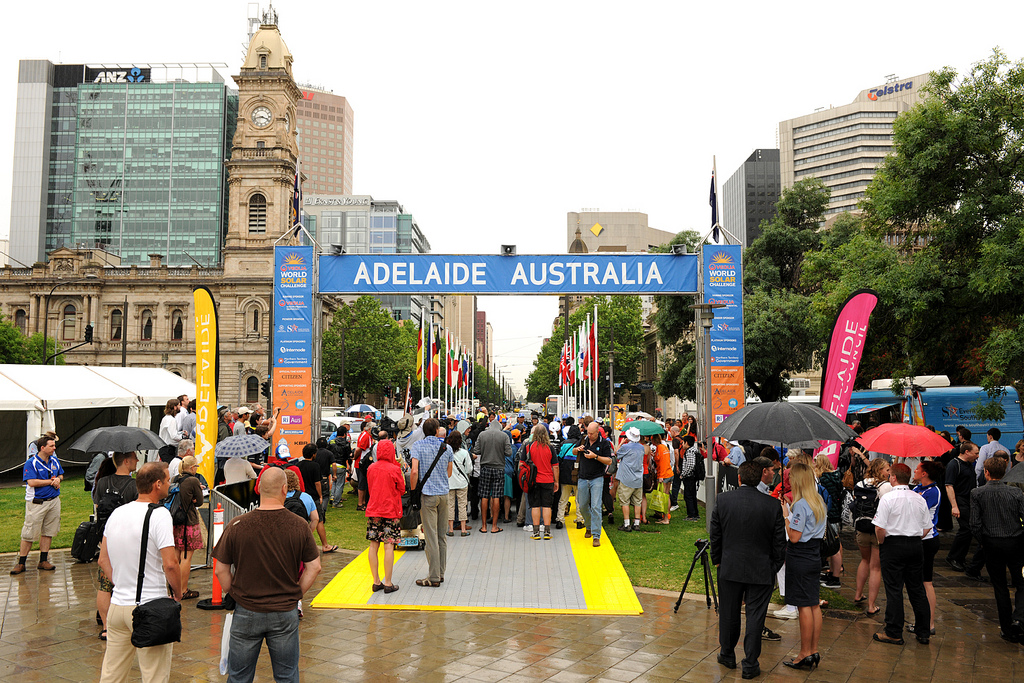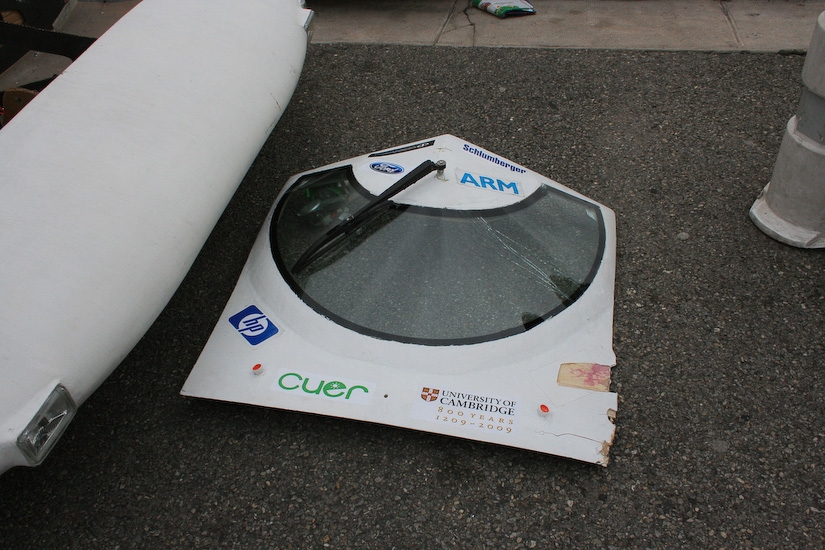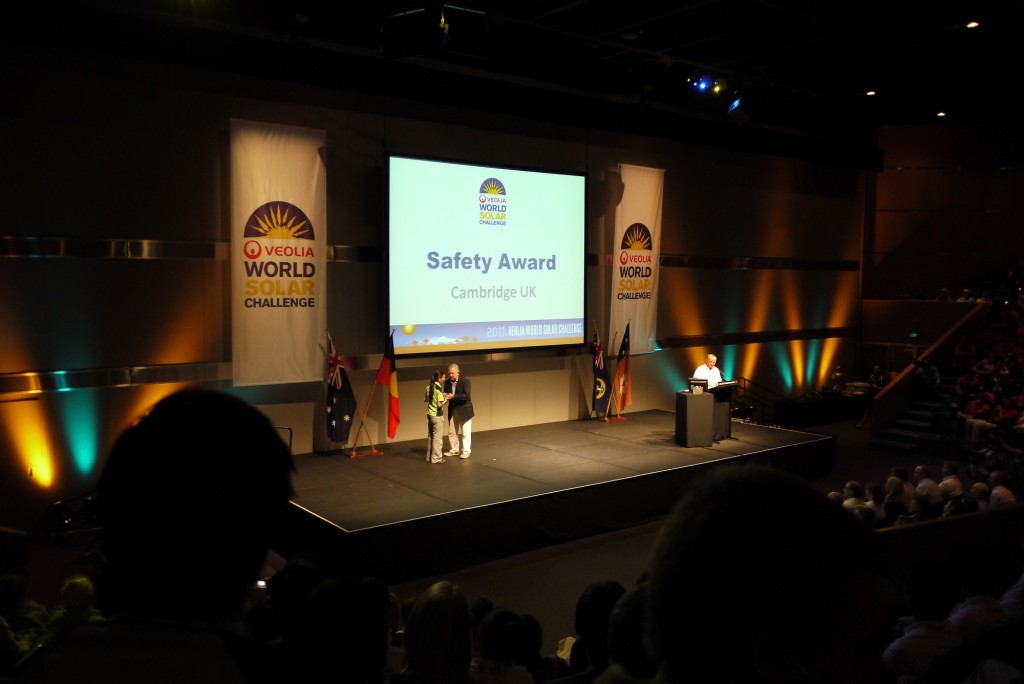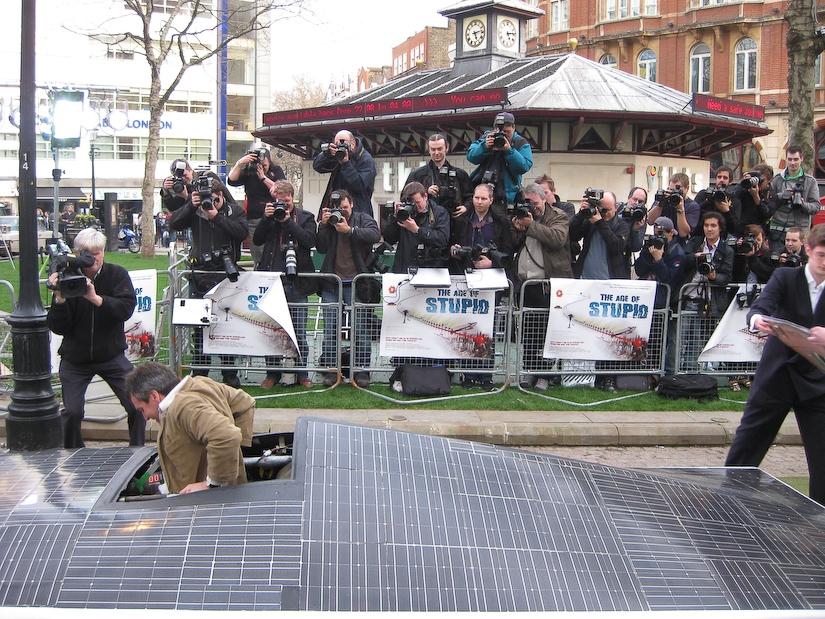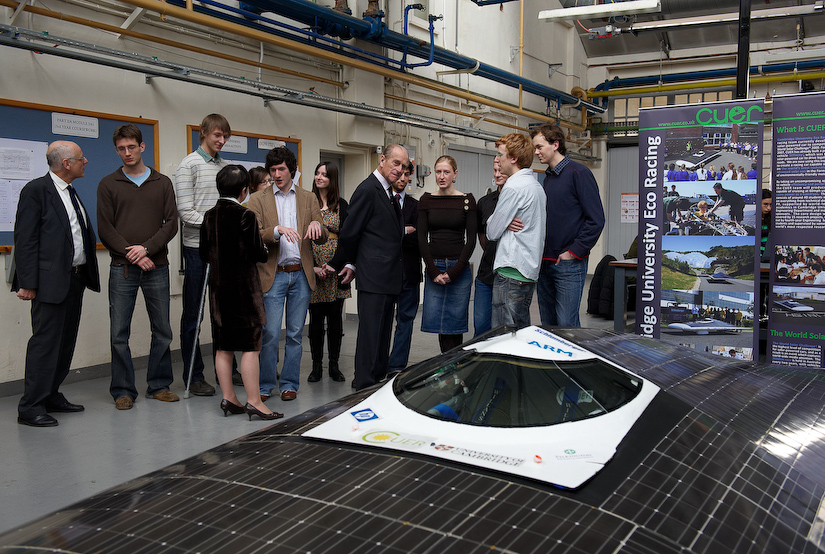CUER’s sun-powered car for the 2013 World Solar Challenge
Cambridge University Eco Racing (CUER) is a 60 student organisation that design, build and race solar powered vehicles, aiming to win the World Solar Challenge 2013 in Australia, the world’s foremost solar endurance race. Since its founding in 2007, CUER have been the UK’s number 1 for solar vehicle development.
The World Solar Challenge is a gruelling 3,000 km marathon across the heart of Australia from Darwin to Adelaide. Challengers have to design and build a vehicle that will use the power of the sun to maintain an average of more than 80 km/h in one of the harshest environments known to man.
Students in the Cambridge University Eco Racing (CUER) team thought they had the winning vehicle,but in June 2012, one year into the two‐year preparation, the rules were changed so dramatically that 36 out of the 37 cars entered in the World Solar Challenge last year would have been disqualified.
The most significant rule change means only four wheel vehicles are allowed with each wheel at the corner of a rectangle, to make the challenge more relevant to the car manufacturing industry.
Undeterred by the new rules, the team have come back with a radical new concept – Daphne. The new design is highly innovative and pulls on the team’s knowledge not just of automotive engineering and aerodynamics but also of sophisticated modelling, space‐grade composites and optimising solar cells. The result is a vehicle that rewrites the rulebook for solar vehicles but still meets the race parameters.
“We predict that at the very least, CUER’s Daphne will weigh 25kg less than the lightest car ever to enter the World Solar Challenge. This means we can design innovative, energy saving features that wouldn’t be practical in a heavier car,” explained Keno Mario-Ghae, a second year engineering student at Girton College.
An example of this innovation is embedding the solar panels within an after facing sun tracking plate that follows the trajectory of the sun, creating a 20 per cent gain in power.
Keno continues; “The race crosses 22 degrees of latitude so we have created a modelling programme that will adjust the solar cells to maintain the optimum position at all times.” But it isn’t just solar cells that lead Daphne’s innovative design, CUER has designed every feature of the car down to the smallest detail.
“Usually suspension in a car involves a spring and a dash pot, but Daphne will have an in-built carbon based suspension system, ensuring even less energy is wasted. Locating the motor in the hub of the wheel means there is no need for gears, chains or differentials which each account for a 5 per cent loss in efficiency.”
“This means Daphne will be 98 per cent efficient, allowing us to exceed speeds of 82 km/h, all on the equivalent power of a hair dryer.”
“The reason the design works so well is by using a canopy which houses the solar cells, the aerodynamic and solar performances are decoupled. This means we can improve the aerodynamics,without having an adverse effect on solar performance, making our design highly efficient. Efficiency is where our real strength lies and this is how we plan to compete with the bigger teams.”
Keno continues: “Daphne has highly refined aerodynamics and a carbon fibre monocoque chassis.Even the batteries are large Panasonic laptop batteries, the most efficient available. Daphne will have advanced on-board telemetry which will take into account traffic, weather and driving style, to advise the team on how to reach their optimum efficiency.”

